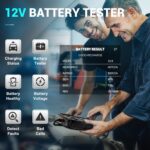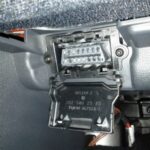Navigating the world of car modifications can sometimes lead to unexpected questions. A recent forum discussion highlighted one such query: converting a Nissan 240sx from OBD1 to OBD2. For those unfamiliar, OBD refers to On-Board Diagnostics, and the shift from OBD1 to OBD2 represents a significant evolution in automotive diagnostic systems. But is converting your 240sx to OBD2 a worthwhile endeavor? Let’s delve into this topic.
Understanding OBD-I and OBD-II
OBD-I, the older standard, was less standardized and varied significantly between manufacturers. Diagnostic information was limited, and accessing it often required specialized tools and knowledge. OBD-II, introduced in the mid-1990s and mandatory in the US for most cars by 1996, brought standardization. It offers a wealth of diagnostic data, including standardized trouble codes, making it easier for mechanics and even car owners to diagnose issues using readily available and affordable OBD2 scanners.
Generally speaking, OBD2 is seen as superior due to its enhanced diagnostic capabilities and ease of use. This might lead one to assume upgrading from OBD1 to OBD2 is a desirable improvement.
The Complexity of OBD1 to OBD2 Conversion on a 240sx
However, converting a 240sx, typically a car from the late 80s to mid 90s and therefore originally equipped with OBD1, to OBD2 is not a straightforward plug-and-play process. It’s significantly more complex than one might initially imagine. Here’s why:
- Wiring Harness Overhaul: OBD2 systems require a different and more complex wiring harness compared to OBD1. The sensors, the Engine Control Unit (ECU), and the diagnostic port itself are wired differently. A conversion would necessitate a significant rewiring of your 240sx’s electrical system.
- ECU and Sensor Compatibility: OBD2 systems rely on a different generation of ECUs and sensors. Simply swapping the diagnostic port won’t suffice. You would likely need to replace your OBD1 ECU with an OBD2 compatible unit and potentially change various engine sensors to ensure compatibility with the new ECU and diagnostic system.
- Significant Modification Effort: This isn’t just about plugging in a new part. A true OBD1 to OBD2 conversion is a substantial modification project, potentially involving ECU reprogramming, sensor replacements, and intricate wiring work.
Why Consider OBD2 and Are There Alternatives?
The original forum post hinted at the reason for considering this conversion: troubleshooting and reading diagnostic codes. With OBD2’s standardized system, reading trouble codes is indeed much easier and more accessible. However, for a 240sx owner, jumping to a full OBD2 conversion solely for this purpose is overkill.
For reading codes on an OBD1 240sx, dedicated OBD1 code readers exist and are readily available. These tools are designed to interface with the older OBD1 systems and provide the diagnostic information you need without the massive undertaking of an OBD2 conversion.
While in some very specific and complex modification scenarios, such as engine swaps involving newer engines with OBD2 systems into an older OBD1 car, aspects of OBD2 might become relevant for engine management, for a standard 240sx, sticking with the original OBD1 system and utilizing appropriate OBD1 diagnostic tools is by far the more practical and sensible approach.
In conclusion, while OBD2 offers advantages in modern diagnostics, converting a 240sx from OBD1 to OBD2 is a complex and likely unnecessary project for most owners. Understanding the capabilities of your OBD1 system and utilizing the correct diagnostic tools is generally the most efficient path forward.

